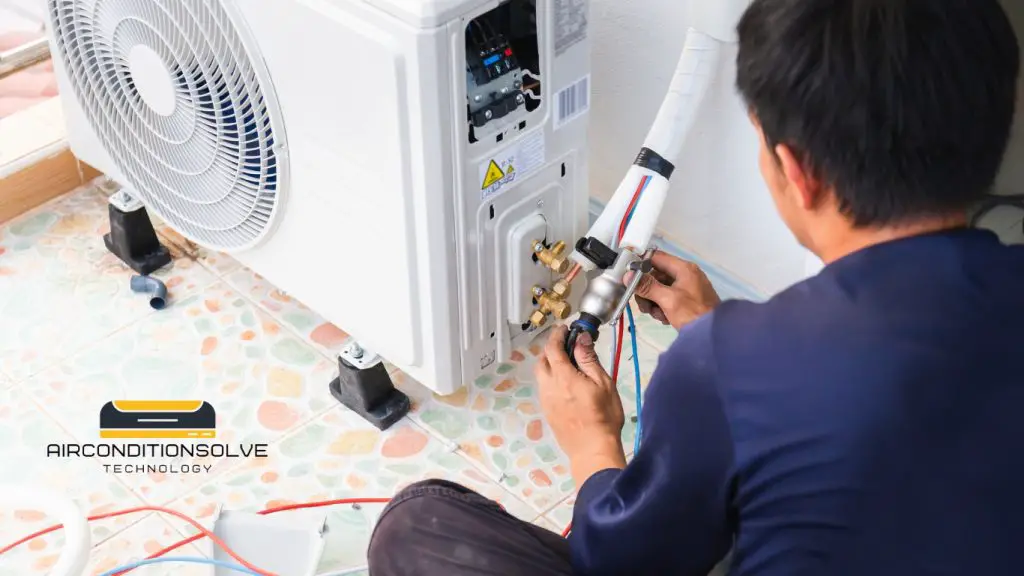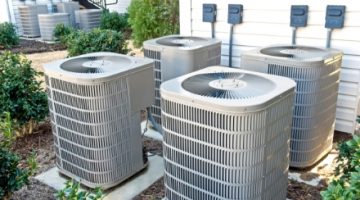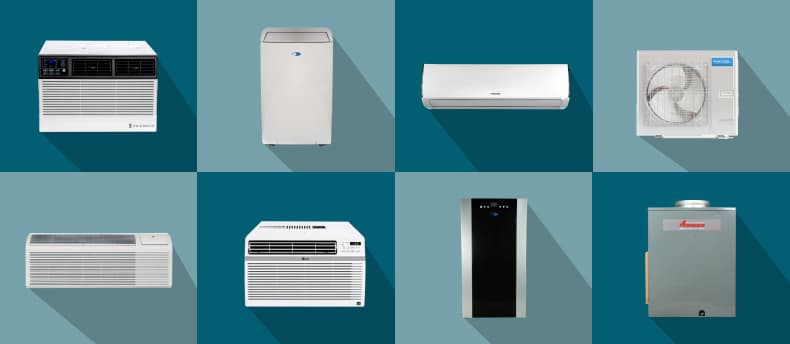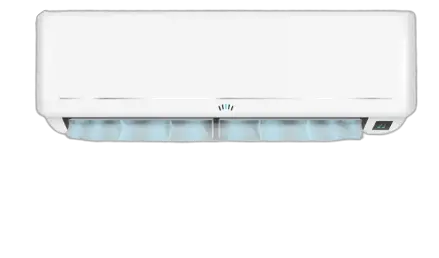Troubleshooting an outdoor AC unit involves identifying and addressing common issues, such as inadequate cooling, strange noises, or a complete lack of power. In order to ensure the optimal functioning of your AC unit, it is important to quickly identify the cause of the problem and take appropriate action.
Common Signs Of AC Unit Issues
Outdoor AC units can often encounter issues that may affect their performance. Keep an eye out for signs like strange noises, weak airflow, or ice buildup, as they could indicate underlying problems that require troubleshooting.
Is your outdoor AC unit not functioning optimally? Identifying potential issues early on can save you from costly repairs or replacements down the line. In this section, we will discuss the most common signs of AC unit problems that you should be aware of. Recognizing these signs will allow you to take the necessary steps to troubleshoot and resolve the issue efficiently.
Overheating And Frequent Shut-offs
If your outdoor AC unit is overheating or experiencing frequent shut-offs, this could indicate a significant problem with your system. An overheating unit is often a result of inadequate airflow, a clogged condenser coil, or a malfunctioning fan motor. These issues can lead to excessive strain on the unit, causing it to overheat and shut down as a safety precaution. If you notice your AC unit constantly cycling on and off or emitting excessive heat, it is vital to address the problem promptly to avoid further damage or breakdown.
Inadequate Cooling Or Temperature Fluctuations
Are you finding it difficult to achieve the desired temperature in your home, or are you experiencing sudden temperature fluctuations? These issues are clear indications that your outdoor AC unit is not cooling your space efficiently. This can be caused by various factors, such as a malfunctioning thermostat, dirty air filters, blocked vents, or a refrigerant leak. A faulty thermostat may prevent your unit from accurately detecting and maintaining the desired temperature, while clogged air filters and blocked vents hinder proper airflow. Additionally, a refrigerant leak can significantly affect the cooling capacity of your AC unit. To ensure optimal cooling performance, it is essential to troubleshoot and resolve these issues promptly.
Unusual Noises Or Vibrations
Your outdoor AC unit should operate with minimal noise or vibrations. If you notice unusual sounds, such as grinding, banging, or squealing, it may indicate a problem. Vibrations, especially excessive ones, can also be an alarming sign. These issues are often caused by malfunctioning motors, loose components, or damaged fan blades. Ignoring these signs can lead to further damage and potential system failure. It is advisable to have a professional inspect and repair your unit to prevent any additional issues.
Leaking Refrigerant Or Water
Finding refrigerant or water leaks around your outdoor AC unit is a clear sign of trouble. Refrigerant leaks can occur due to worn-out valves, damaged tubing, or loose connections. Water leaks, on the other hand, may be a result of a clogged drain pipe or a malfunctioning condensate pump. Both types of leaks can affect the performance and efficiency of your AC unit, while water leaks can also cause water damage to your property. It is crucial to address these issues promptly to avoid further damage and maintain a properly functioning unit.
Frozen Coils Or Icing
Frozen coils or icing on your outdoor AC unit are concerning signs that should not be ignored. This problem can occur when there is a restriction in the airflow, insufficient refrigerant levels, or a malfunctioning blower fan. When the coils freeze, the air conditioner is unable to remove heat effectively, resulting in inadequate cooling and potential damage to the system. If you notice ice buildup on your unit, it is crucial to turn off the AC and allow it to defrost before troubleshooting the cause of the issue. Consulting a professional is recommended to resolve any underlying problems and prevent future icing episodes.

Understanding The HVAC System Components
When it comes to troubleshooting your outdoor AC unit, it’s essential to have a clear understanding of the different components that make up your HVAC system. Each component plays a vital role in the unit’s overall performance, and identifying any potential issues can help you diagnose and resolve problems more effectively.
Condenser Unit And Its Functions
The condenser unit is a crucial part of your outdoor AC system. It is responsible for releasing heat collected from your indoor spaces and transferring it outdoors. This component looks like a box and contains several vital parts, including a compressor and condenser coils.
The compressor is like the heart of the AC unit, as it circulates the refrigerant and increases its temperature before sending it to the condenser coils. The condenser coils then release the heat as the refrigerant is transformed into a gas. They work in conjunction with a fan to remove the heat from the refrigerant, allowing it to cool down and become ready for the next cycle.
Evaporator Coil And Its Role In Cooling
The evaporator coil is located inside your home and is responsible for cooling the air. This component absorbs the heat from the indoor air as the refrigerant evaporates into a gas. Through a series of fins, the coil maximizes its surface area to facilitate efficient heat transfer.
As warm air flows over the evaporator coil, the refrigerant absorbs the heat, leaving the air cooler in the process. The cooled air is then distributed throughout your home via the ductwork and registers, providing a comfortable indoor environment.
Fan Motor And Its Importance In Airflow
The fan motor plays a crucial role in your outdoor unit’s airflow. It is responsible for circulating air over the condenser coils and assisting in heat transfer. By blowing air through the unit, the fan motor helps remove the heat from the refrigerant and releases it outside.
Ensuring the fan motor is in proper working condition is essential for optimal cooling performance. A malfunctioning fan motor can hinder airflow, causing the unit to work harder and potentially leading to overheating issues.
Refrigerant Lines And Their Role In Heat Transfer
The refrigerant lines serve as the pathways for the refrigerant to travel between the indoor and outdoor units. These copper or aluminum lines carry the refrigerant, which is responsible for absorbing and releasing heat, facilitating the cooling process.
During its journey, the refrigerant transitions between a high-pressure gas and a low-pressure liquid, allowing it to absorb heat from inside your home and release it outside. The condition and insulation of the refrigerant lines are important factors in maintaining efficient heat transfer and preventing any leaks that could impact the system’s performance.
Thermostat And Its Impact On Temperature Control
The thermostat serves as the control center for your HVAC system. It allows you to adjust and regulate the desired temperature in your home. The thermostat communicates with the outdoor unit, instructing it to cycle on and off based on the set temperature and the current indoor conditions.
Having a properly functioning thermostat is crucial for accurate temperature control and energy efficiency. If you notice temperature inconsistencies or your unit not responding to temperature changes, it may be a sign of a faulty thermostat that requires attention.

DIY Troubleshooting Steps For AC Unit Problems
Is your outdoor AC unit not performing as it should? Troubleshooting common issues can help you get your cooling system up and running again without the need for a professional. Let’s dive into some easy DIY troubleshooting steps to get your AC unit back on track.
Check And Clean The Air Filters
A dirty or clogged air filter can hinder airflow, reducing the efficiency of your AC unit and causing it to work harder than necessary. To ensure optimal performance, regularly inspect and clean or replace the air filters every one to three months.
Examine The Condenser For Debris And Blockages
The condenser unit, located outside, can accumulate leaves, debris, and other environmental pollutants that obstruct airflow. Clear any visible debris from the unit and ensure that there are no objects blocking the airflow around the unit to maintain proper ventilation.
Inspect The Evaporator Coil For Dirt And Mold Buildup
Over time, the evaporator coil can become dirty or develop mold and mildew, hindering its ability to absorb heat effectively. Regularly inspect the coil and clean it using a soft brush or a specifically formulated coil cleaner to improve your AC unit’s performance.
Ensure Proper Refrigerant Levels
Low refrigerant levels can result in an inefficient cooling system. Check for signs of refrigerant leakage, such as icy coils, and if necessary, contact a professional to recharge the refrigerant and address any leaks.
Test And Calibrate The Thermostat
A faulty thermostat can cause your AC unit to malfunction. Check the accuracy of your thermostat by comparing the temperature reading with a separate thermometer. Calibrate or replace the thermostat if needed to maintain a comfortable indoor temperature.
By following these DIY troubleshooting steps, you can often resolve common AC unit problems and restore optimal performance and cooling efficiency to your outdoor unit. Remember to consult a professional technician for complex issues or if these troubleshooting steps do not resolve the problem.

Professional Fixes For Complex AC Unit Issues
When your outdoor AC unit is facing complex issues, it’s time to call in the professionals. These experts have the knowledge and experience to troubleshoot and fix even the most complicated problems. Here are some professional fixes that can tackle complex AC unit issues:
Repairing Or Replacing Faulty Fan Motors
Faulty fan motors can cause your AC unit to malfunction or even stop working altogether. The professionals will inspect the fan motor for any signs of damage or wear and tear. If repair is possible, they will use their expertise to fix the motor. However, if the damage is extensive, they may suggest replacing the faulty fan motor. This will ensure that your AC unit runs smoothly and efficiently once again.
Fixing Refrigerant Leaks And Recharging The System
Refrigerant leaks can significantly affect the performance of your AC unit, leading to insufficient cooling or no cooling at all. Professionals have the necessary tools and knowledge to detect and repair refrigerant leaks effectively. They will identify the source of the leak, fix it, and then recharge the system with the correct amount of refrigerant. This will restore the optimal cooling capabilities of your AC unit, keeping your indoor environment comfortable.
Repairing Or Replacing Damaged Condenser Coils
Damaged condenser coils can impair the heat-exchange process in your AC unit, resulting in poor cooling performance. Professionals can assess the condition of the condenser coils and determine whether they can be repaired or need to be replaced. If the damage is minor, they may opt for repair. However, if the coils are extensively damaged, replacement might be the best solution. This ensures that your AC unit can effectively remove heat from your indoor space, allowing for efficient cooling.
Cleaning And Sanitizing The Entire System
Over time, dust, dirt, and other particles can accumulate in your AC unit, hampering its performance and affecting indoor air quality. Professionals will thoroughly clean and sanitize the entire system, including the coils, filters, and vents. They will remove any debris that may be obstructing the airflow and disinfect the components to eliminate harmful contaminants. This not only improves the overall efficiency of your AC unit but also promotes cleaner and healthier indoor air.
Upgrading And Optimizing The HVAC System For Better Performance
If you’re frequently facing complex issues with your AC unit, it might be time to consider upgrading and optimizing your HVAC system. Professionals can evaluate your current system and recommend upgrades or modifications that will enhance its performance and energy-efficiency. This may involve installing a higher SEER-rated unit, upgrading to a variable-speed blower motor, or adding smart thermostats for better control. These enhancements will result in improved comfort and lower energy bills.
Regular Maintenance To Prevent AC Unit Problems
Maintaining your outdoor AC unit is crucial to ensure optimal performance and prevent untimely breakdowns. By following a routine maintenance schedule, you can extend the lifespan of your AC unit and minimize the risk of costly repairs. Here are some essential maintenance tasks you should perform regularly to keep your AC unit running smoothly.
Scheduling Annual Professional Inspections
Regular inspections by a professional HVAC technician are instrumental in identifying potential issues before they escalate into major problems. By scheduling an annual inspection, you can catch any underlying problems and address them promptly, saving you from unexpected breakdowns during the peak summer season. A professional technician will examine the unit’s electrical connections, calibrate the thermostat, inspect the ductwork, and ensure the overall functionality of your AC unit.
Cleaning And Replacing Air Filters Regularly
One of the simplest yet most effective maintenance tasks is to regularly clean or replace the air filters in your AC unit. Over time, these filters can accumulate dust, dirt, and debris, obstructing proper airflow. By cleaning or replacing the filters every one to three months, depending on the manufacturer’s recommendation, you can ensure that your AC unit operates efficiently. Additionally, clean air filters help improve indoor air quality, making your home healthier and more comfortable.
Clearing Debris And Vegetation Around The Unit
Ensure that there is no debris, leaves, or vegetation obstructing your outdoor AC unit. Regularly clearing the area around the unit not only improves airflow but also prevents potential damage to the equipment. Make sure to remove any dead leaves, branches, or grass clippings that have accumulated near the unit. This simple step can prevent clogs, improve cooling performance, and reduce strain on your AC unit.
Lubricating Moving Parts For Smoother Operation
To keep the moving parts of your AC unit in good working condition, lubrication is essential. Regularly lubricate the fan motor and other moving components as per the manufacturer’s recommendations. This not only helps reduce friction and wear but also ensures smoother operation of your AC unit. Remember to use the correct type of lubricant specified for your particular unit to avoid any potential damage.
Maintaining Adequate Refrigerant Levels
Proper refrigerant levels are essential for the efficient cooling of your home. Low refrigerant levels can cause your AC unit to struggle in maintaining the desired temperature. If you notice decreased cooling performance, it may indicate a refrigerant leak. Contact a professional technician to inspect your unit and recharge the refrigerant if needed. By maintaining adequate refrigerant levels, your AC unit can perform optimally and provide the comfort you need during hot summer months.

Frequently Asked Questions Of Troubleshooting Outdoor AC Unit
How Do I Troubleshoot My Outdoor AC Unit?
To troubleshoot your outdoor AC unit, check if the unit is getting power, clean and remove any debris from the unit, check the thermostat settings, and inspect the wiring for any damage or loose connections.
Why Is My Outdoor AC Unit Not Turning On?
If your outdoor AC unit is not turning on, it could be due to issues with the power supply, such as a tripped circuit breaker or a blown fuse. It could also be caused by a faulty thermostat, a malfunctioning capacitor, or a problem with the wiring.
Why Is My Outdoor AC Unit Making Strange Noises?
Strange noises coming from your outdoor AC unit can indicate various issues. It could be due to loose or damaged components, such as fan blades or motors. It could also be caused by a refrigerant leak, which requires immediate attention from a professional technician.
How Often Should I Clean My Outdoor AC Unit?
To maintain optimal performance, it is recommended to clean your outdoor AC unit at least once a year. However, if your unit is located in a dusty or high-pollution area, you may need to clean it more frequently. Regular cleaning helps prevent dirt and debris buildup, which can affect the unit’s efficiency.
Conclusion
Troubleshooting your outdoor AC unit doesn’t have to be a daunting task. By following the steps outlined in this blog post, you can easily identify and resolve common issues that may arise. Remember to regularly maintain your unit, keep it clean, and seek professional help when needed.
With proper care and attention, your AC unit will continue to provide efficient cooling for years to come.

